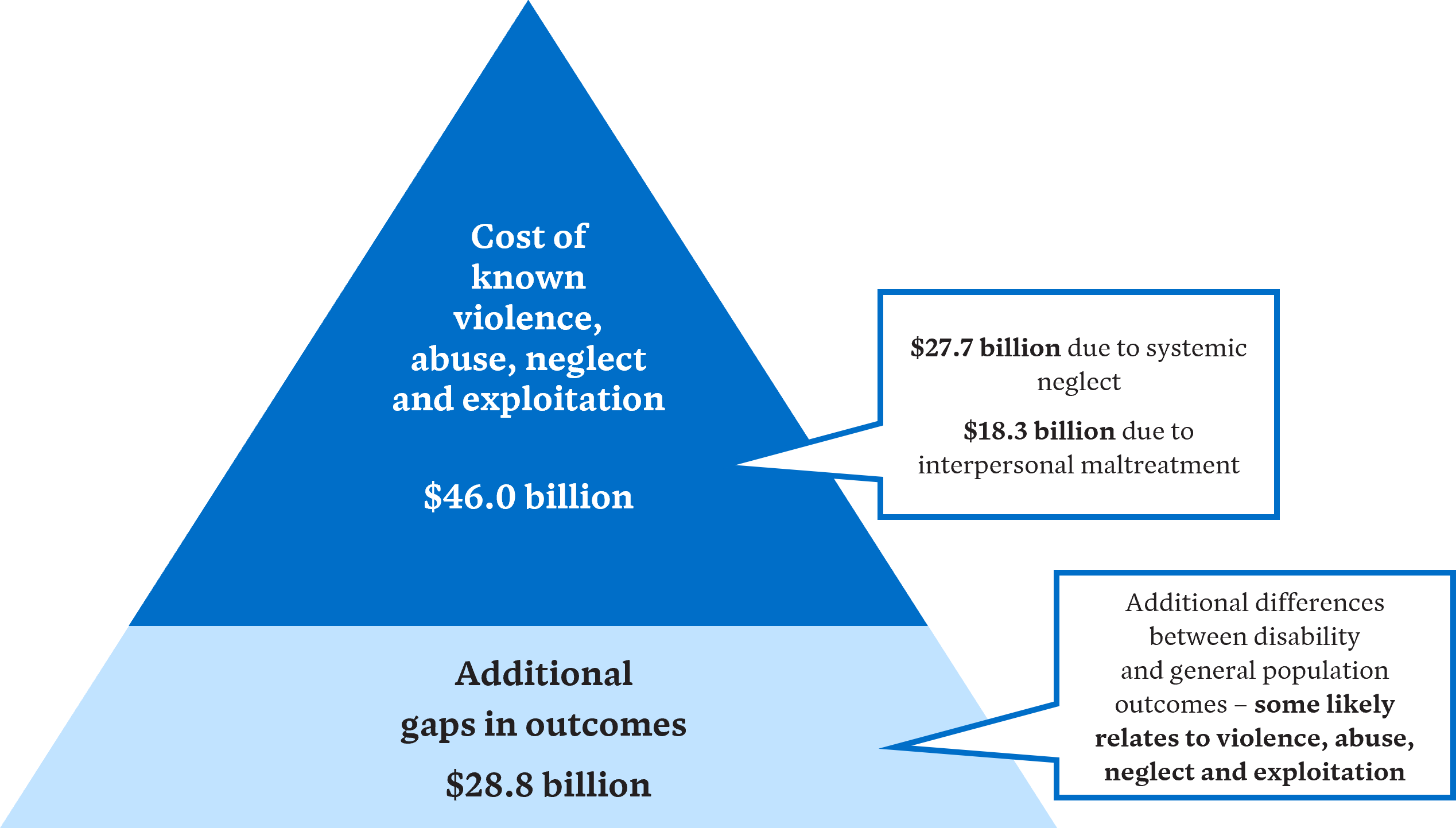Disability Royal Commission releases Taylor Fry’s report on the economic cost of violence, abuse, neglect and exploitation


Systemic failures and maltreatment experienced by people with a disability in Australia is estimated at $46 billion annually, or $9,600 on average per person with a disability. These are among the key findings of recently published research undertaken by Taylor Fry in collaboration with The Centre for International Economics.
The report, commissioned by the Disability Royal Commission, underscores the need for urgent action to address the many cases of violence, abuse, neglect and exploitation identified by the Royal Commission through its inquiry. It aims to contribute to a growing awareness across government and in the community of the costs of maltreatment of people with disability and the societal inequities they face daily.
With 4.8 million people living with disability in Australia (19% of the total population), and half of this figure over the age of 65, we hope our work will assist decision-makers and policy-makers in determining allocation of resources across areas of governmental intervention to address the issue.

Half of the 4.8 million people living with disability in Australia are over the age of 65
How we estimate the economic costs
Using actuarial and econometric modelling to estimate the cost, Taylor Fry and The CIE calculate the expenditure that would be avoided if violence, abuse, neglect and exploitation ceased. This is based on statistics available for the years 2021 to 2022 and take into account:
- Systemic failures and neglect ($27.7 billion) – This includes failure by government, business and other systems to provide equal opportunity to participate in the economy and equal access to quality services. Costs include loss in labour force productivity and costs associated with lack of accessible housing.
- Interpersonal maltreatment perpetrated by individuals ($18.3 billion) – Costs include additional hospital stays due to maltreatment and reduced quality of life.
Key findings – Cost, experience and gaps in outcomes
- The cost of violence, abuse, neglect and exploitation that can be reliably measured is $46 billion in 2021-22
- 60% of people living with disability experienced maltreatment perpetrated by an adult
- 28% of children with disability experienced significant child peer bullying in their lifetime
- The average cost of violence, abuse, neglect and exploitation per person is double for First Nations people
- The cost of interpersonal maltreatment is higher for women than men, while the cost of systemic failures is higher for men.
Gaps in outcomes, which are indicative costs from other forms of over-representation in poor-outcome areas and under-representation in financial and social opportunities are valued at $28.8 billion in 2021-22. Specifically, these include:
- Finding it more difficult to secure employment when a person with disability rates themselves as ‘able to work’
- Poor health outcomes from higher rates of obesity, lower rates of physical activity and higher blood pressure compared to other Australians
- Higher rates of homelessness, involvement with the justice system and loneliness.

We hope our findings will assist decision-makers to allocate resources and inform interventions
The report also states that costs would likely be higher if more data was available. Substantial savings can be made over time if governments and society are successful in addressing maltreatment, including issues of systemic failure and neglect.
Other articles by
Hugh Miller
Other articles by Hugh Miller
More articles

NSW Department of Communities and Justice releases Taylor Fry report
Taylor Fry’s findings and recommendations in a report for the NSW Government evaluating a key initiative to improve lives
Read Article

Well, that generative AI thing got real pretty quickly
Six months ago, the world seemed to stop and take notice of generative AI. Hugh Miller sorts through the hype and fears to find clarity.
Read Article
Recent articles
Recent articles
More articles

Press release – Taylor Fry announces Canberra chief for government practice
An exciting new chapter for Taylor Fry with the launch of our office in the nation's capital and the appointment of Jeremy Smith-Roberts
Read Article

NSW Ministry of Health releases Taylor Fry report
Our evaluation of suicide prevention initiatives shows where they’re operating well and where access and follow-up care can be strengthened
Read Article





